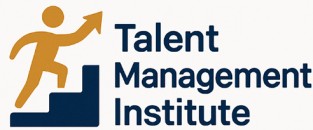
The Importance of Employee Orientation
The Gateway to a Seamless Start
Stepping into a new company can be daunting for any employee, whether it's their first job or they're a seasoned professional moving to a different role. The process of employee orientation is crucial in not only easing this transition but also laying the foundation for a successful tenure within the organization. A well-structured orientation process helps new hires understand their roles and responsibilities, integrate into the company culture, and become productive members of their teams.
In the fast-paced world of business, where time is of the essence, onboarding is more than just a first day formality. It serves as an introduction to company policies, health and safety protocols, and the vital aspects of company operations. However, to truly engage employees right from the start, companies are shifting away from traditional orientation methods that focus primarily on paperwork, towards more interactive and comprehensive programs.
Understanding the underlying principles of employee orientation and how it aligns with the broader onboarding process is paramount. Organizations that prioritize employee engagement from the onset see increased job satisfaction, productivity, and retention rates. Moreover, a strategic orientation program ensures that new employees are equipped with the tools and training necessary to hit the ground running.
As organizations move towards innovative orientation strategies, the need for ongoing improvements becomes apparent. It is essential to keep abreast of best practices in the industry, embracing new technologies like paper-free solutions and training software to streamline the process. As highlighted in our insights on ensuring your team is always ready, a strategic approach to orientation and onboarding can make a significant difference.
Traditional Orientation: The Basics
Foundational Steps in Traditional Orientation
Traditional orientation serves as the foundational step in acquainting new hires with the company culture, essential job roles, and the organization’s core values. This initial stage typically takes place within the first few days of employment and sets the tone for their future experience in the organization. In this orientation model, the process is structured and often involves face-to-face sessions where employees receive comprehensive instruction on their roles, organizational expectations, and company policies. Here, the goal is straightforward: ensure the smooth integration of new team members into the existing framework without overwhelming them.- Information Packets: New hires often receive a comprehensive packet that details the company's history, mission, core values, and an overview of strategic goals. These packets commonly include documents outlining workplace safety and health protocols.
- Company Policies: A critical component of traditional orientation is the introduction to company policies which cover everything from attendance requirements to code of conduct. This ensures that employees understand the guidelines they need to adhere to.
- Training Programs: While formal job-specific training might occur later, traditional orientation often includes basic training overviews. This can be an introduction to training software or an understanding of basic job responsibilities required of the employee.
Interactive Orientation: Engaging New Employees
Engaging Employees Beyond the Basics
The traditional orientation model serves as a starting point, laying the groundwork for new hires. However, today's organizations are increasingly shifting towards an interactive orientation, which centers around engaging employees beyond the basics. This approach focuses on involving team members through experiential learning and active participation in the orientation process.
Interactive orientation engages employees by incorporating unique strategies that promote employee engagement from day one. While traditional methods often rely on passive activities, such as lectures and paper-based materials, interactive orientation emphasizes dynamic methods for a more enriching new hire experience.
- Interactive Learning: The interactive orientation introduces employees to their job roles using hands-on training sessions. By utilizing modern training software, employees gain an understanding of their roles through simulated scenarios, better preparing them for actual workplace challenges.
- Team Integration: Unlike traditional programs, interactive orientation encourages new team members to connect with colleagues through ice-breaking activities and collaborative tasks. This links new hires with existing employees, strengthening company culture and facilitating a smoother onboarding process.
- Engaging with Company Culture: By briefing new hires with video tours and interactive guides, companies help them absorb the organization’s mission and values. This fosters a sense of belonging and commitment beyond simply knowing company policies.
Implementing an interactive orientation strategy can modernize the orientation program, enhance the learning experience, and foster a sense of community. This engagement lays the foundation for effective onboarding, where employees feel more valued and invested in their roles, driving organizational success.
Onboarding: A Comprehensive Approach
A Comprehensive Journey to Successfully Onboard New Employees
Onboarding is often seen as a holistic approach to integrating new hires into a company. It goes beyond the traditional orientation process, which typically involves a straightforward walk-through of company policies and job roles. Instead, onboarding encompasses a broader and more immersive experience for new employees. One of the main pillars of effective onboarding is a well-structured orientation program that welcomes new team members and helps them understand the organization’s culture. This process should aim to be interactive, drawing on elements from both traditional and interactive orientations to effectively engage employees from day one.- Cultivating Understanding: The initial days of a job are crucial for new hires as they gain insights into the company culture and their specific roles within the organization. An onboarding process that focuses on thorough training—be it through paper-free methods or interactive training software—can be beneficial.
- Fostering Engagement: Unlike traditional approaches, which might use passive learning methods, robust onboarding encourages active employee engagement. By facilitating direct interaction with team members, job orientation becomes a collaborative effort, promoting a sense of belonging among new hires.
- Addressing Best Practices: Incorporating best practices in onboarding could include creating personalized experiences for new employees, emphasizing health safety protocols, and involving them in team discussions. These efforts contribute to a seamless integration into the team.
Comparing the Three Types of Orientation
Comparative Insights on Orientation Programs
Understanding the different types of employee orientation—traditional, interactive, and comprehensive onboarding—can help a company tailor the best approach for their new hires. Each method serves a unique purpose and offers distinct benefits for enhancing both the experience for employees and the company’s overall health.- Traditional Orientation: This method focuses on the basics, providing new employees with essential information on job roles, company policies, and health safety. Traditionally, it may involve verbal explanations, job orientation manuals, and an overview of the organizational culture. However, it's mostly a passive experience for new team members.
- Interactive Orientation: An improvement over the traditional approach, the interactive method involves engaging new hires actively. Companies often use digital tools and training software to make the experience more dynamic. This approach enhances employee engagement from day one, enabling better understanding of their job responsibilities and embedding them in the company culture.
- Onboarding: The most comprehensive orientation process, onboarding is not limited to the first day or even the first week. It combines elements of both traditional and interactive orientations, extending beyond simple job training. It includes a strategic plan to integrate the employee into the team and organization over several months, improving retention and job satisfaction.
Choosing the Right Orientation Strategy
Determining the Optimal Orientation Strategy for Your Company
Choosing the right type of employee orientation is a critical task for any organization. The decision should align closely with your company's culture, the nature of job roles, and the unique expectations of new employees. Understanding the strengths and limitations of each orientation approach—traditional, interactive, and comprehensive onboarding—can greatly assist in this process.
If your organization values a structured and straightforward introduction to company policies and job roles, traditional orientation might be the way to go. This approach sets a clear guideline and ensures the essential information about the company and health safety is communicated effectively on day one.
In contrast, an interactive orientation might be more suitable for companies emphasizing employee engagement and participation, offering an engaging experience that often involves dynamic training software and direct interaction with team members. This strategy can help foster a strong connection between new hires and existing employees, enhancing overall team cohesion and understanding of company culture.
On the other hand, if your organization is looking to embrace the most comprehensive method, the onboarding process could be the answer. This well-organized program goes beyond the confines of a single day or session, encompassing continuous training and integration efforts that fully prepare employees for their roles. Employee onboarding encourages the development of paper-free processes and promotes the assimilation into the organizational culture.
Consider your organization’s objectives, the diversity of employee roles, and the desired speed of integration when selecting your orientation strategy. Each method has its place, but the right choice will seamlessly align with your company’s vision and long-term goals for employee success.












